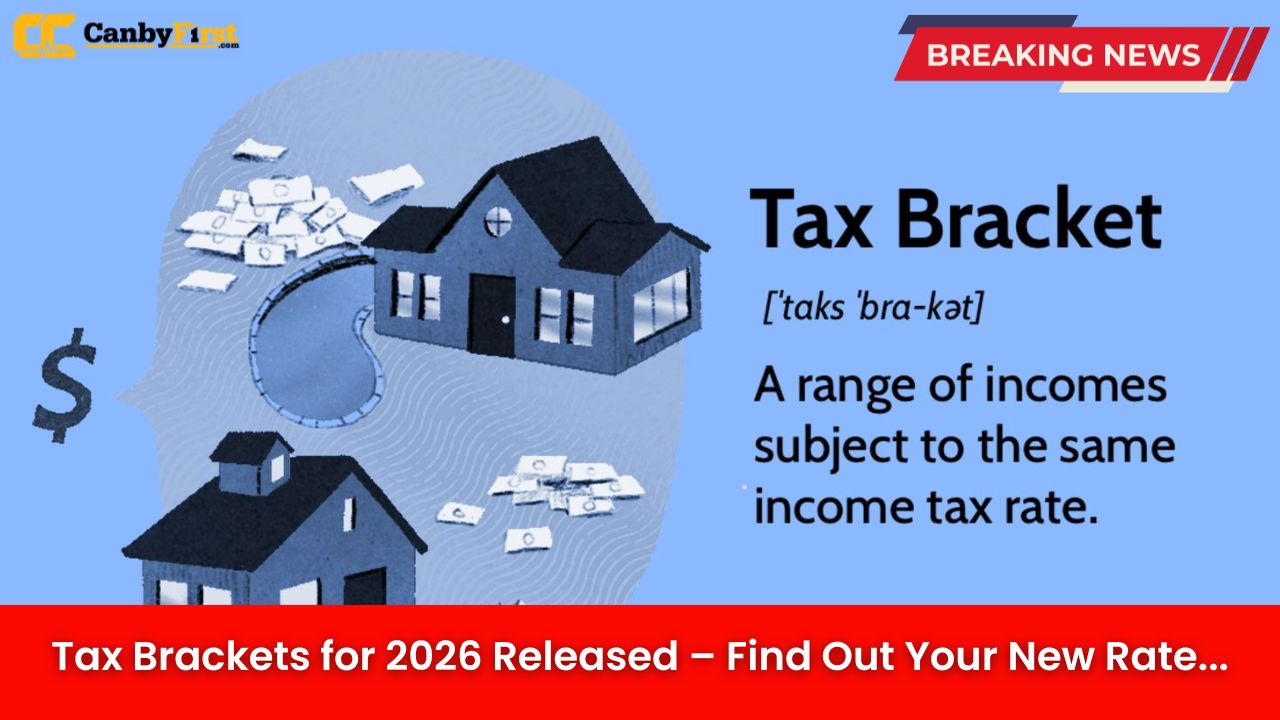The Internal Revenue Service (IRS) has officially released the updated tax brackets for 2026, giving Americans a clearer picture of how their income will be taxed in the coming year. With adjustments aimed at reflecting cost-of-living increases and broader economic changes, millions of taxpayers will see shifts in their withholding rates and potential refunds.
Key Changes in 2026 Tax Brackets
Every year, tax brackets are adjusted to keep pace with inflation, and 2026 is no exception. This year, the IRS has expanded the income ranges under each bracket, effectively reducing the tax burden for many households. The aim is to prevent “bracket creep,” where inflation pushes incomes into higher tax rates even if purchasing power does not meaningfully increase.
For 2026, the seven federal income tax brackets will remain at 10%, 12%, 22%, 24%, 32%, 35%, and 37%, but the income thresholds for each have shifted.
Also Read
2026 Federal Income Tax Brackets for Individuals
| Tax Rate | Taxable Income (Single Filer) | Taxable Income (Married, Filing Jointly) |
|---|---|---|
| 10% | Up to $12,150 | Up to $24,300 |
| 12% | $12,151 – $47,000 | $24,301 – $94,100 |
| 22% | $47,001 – $100,200 | $94,101 – $200,400 |
| 24% | $100,201 – $191,500 | $200,401 – $383,000 |
| 32% | $191,501 – $243,050 | $383,001 – $486,100 |
| 35% | $243,051 – $609,500 | $486,101 – $731,200 |
| 37% | Over $609,500 | Over $731,200 |
What This Means for Taxpayers
The widening of income brackets is expected to offer moderate relief to middle-class households, whose wages have gradually risen over the last few years due to inflation and labor market adjustments. For instance, someone earning $50,000 annually in 2025 may have been closer to the higher end of the 22% bracket, but under the new ranges, their effective tax rate is expected to ease.
Married couples filing jointly will also benefit, as more of their combined income now falls under lower brackets before the higher rates take effect. High-income earners, however, will see little change, as the top marginal tax rate of 37% remains intact.
Standard Deduction Adjustments
Alongside bracket adjustments, the IRS has raised the standard deduction for taxpayers. For 2026:
-
Single filers: $15,050 (up from $14,600 in 2025)
-
Married filing jointly: $30,100 (up from $29,200 in 2025)
-
Head of household: $22,550 (up from $21,900 in 2025)
These increases aim to further cushion households against inflation, reducing taxable income and lowering the likelihood of filing itemized deductions for many.
Impact on Different Income Groups
-
Low-income households: Will benefit from the higher standard deduction and wider lower brackets, potentially reducing their overall tax liability to near zero.
-
Middle-income earners: Likely to see the most significant benefit, as wage gains in recent years are offset by inflation adjustments that prevent them from entering higher categories prematurely.
-
High-income individuals: While their top rate remains unchanged, a slightly wider bracket means marginal relief on certain income portions, though overall savings are minimal.
Policy Context and Future Changes
These 2026 changes mark an important year as certain provisions from the Tax Cuts and Jobs Act (TCJA) of 2017 are set to expire at the end of 2025 unless Congress acts. Lawmakers will be watching closely to see how these new brackets affect taxpayers’ finances and the federal budget balance. Discussions on whether to extend or revise key provisions are already underway on Capitol Hill.
For now, the release of the 2026 tax brackets gives clarity and allows Americans to start planning ahead. Tax professionals recommend reviewing withholdings and financial strategies before the new year to avoid surprises come filing season.
FAQs
1. When do the new 2026 tax brackets take effect?
They will apply for income earned starting January 1, 2026, and will be used for tax returns filed in 2027.
2. Do higher brackets mean I pay that rate on all my income?
No. The US tax system is progressive, meaning only income within each bracket is taxed at that rate, not your entire earnings.
3. Will the standard deduction increase again in future years?
Yes, it typically adjusts yearly for inflation, though the exact change depends on IRS calculations.
4. How do these changes affect high-income earners?
High earners will see minor relief due to bracket widening but will still face the same top marginal rate of 37%.
5. Should I adjust my withholdings now?
It may be wise to review your payroll withholdings in late 2025 to ensure they reflect the new 2026 structure.












